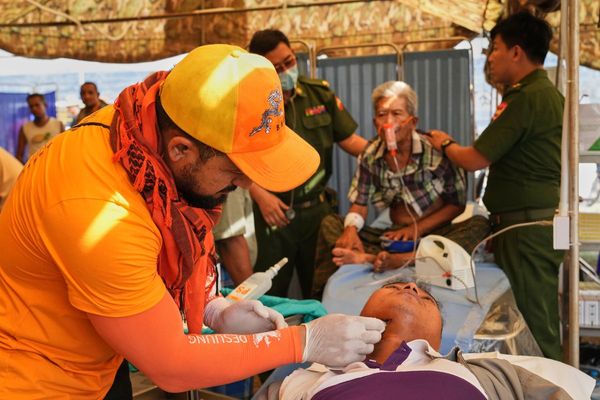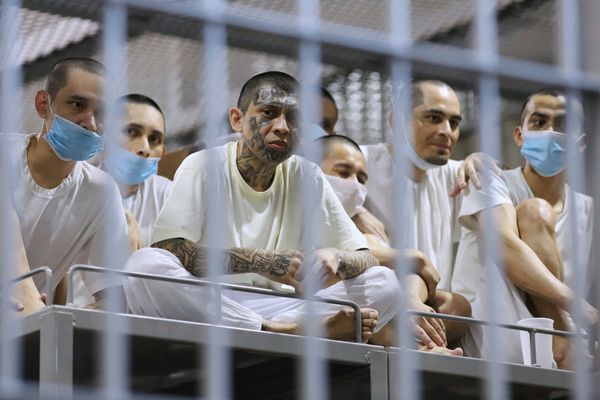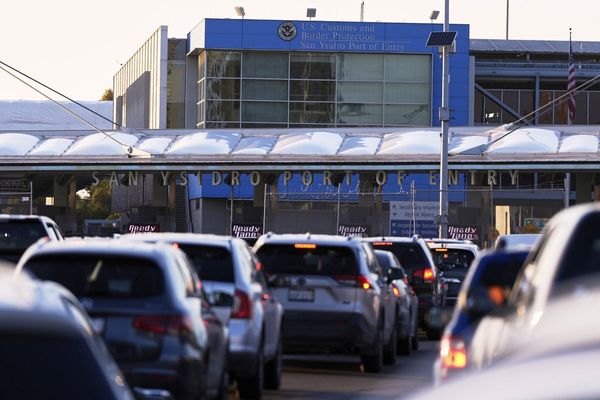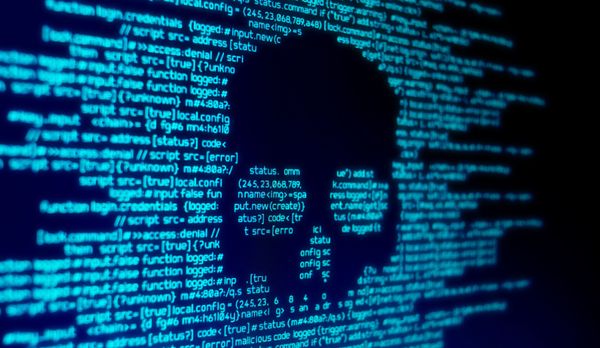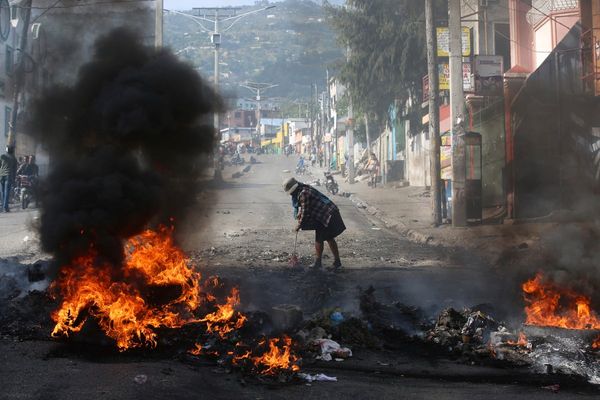
In March, as reports of sickening crimes in the New York City subway filled local and national news, Mayor Eric Adams promised to get tough on criminals and tamp down on the incidents. Yet a prolific but little-watched vlogger was skeptical. Harkening back to the bad old days of crime in the 1980s, this was, the man said on YouTube, the “same old shit again.”
“He can’t stop no fuckin’ crime in no subways. He might slow it down, but he ain’t stoppin’ shit,” said the man, who called himself prophetoftruth88. “Those who gonna commit crimes, like the shooting? … You can’t stop that. You’d have to have a policeman in every station. That’s not possible.”
As though fulfilling his own prophecy, the man, whose name is Frank James (fortuitous for a train criminal), shot 10 people Tuesday at a subway station in Brooklyn’s Sunset Park neighborhood, according to police. At least another 13 were injured in the commotion. James was arrested yesterday afternoon.
[Read: Today your phone became a police radio]
Yet whatever James’s delusions—his now-deleted YouTube channel was filled with paranoid and bigoted rants, including Malthusian predictions and racist stereotypes—he was in touch with the zeitgeist on crime in the subway. The incidence of crime is up and the public is jumpy about the risk of victimization. In absolute terms, the number of crimes in the subway is still very low—but perception of crime is more important to the public, and an elevated perception of crime risks sending the New York City system and other transit systems into a death spiral, where fear of crime begets low ridership, which in turn begets more crime.
Before the attack on Tuesday, several other attacks had received widespread attention. In January, a woman died after she was pushed in front of a train, and another man was killed when he jumped on the tracks to try to help a victim of an attack. In March, a man smeared feces on the face of a subway rider. In 2021, there was a spate of stabbings on the trains. The horrifying list goes on. Leaders of the Metropolitan Transit Authority, which runs the system, blamed the New York Police Department for failing to control crime. Police pointed a finger at prosecutors.
These stories give the impression of skyrocketing crime. It is true that crime has risen over the past couple of years, but the increase is relatively modest. In 2021, there were 3,918 transit complaints, up from 3,411 in 2020. Those numbers are actually down from 2019 (4,714), but ridership has also plummeted during the pandemic. (Weekday ridership last week averaged 55 to 60 percent of daily pre-pandemic numbers.)
A more useful number is crime rate. In 2021, The New York Times compared felonies per million riders in the first three months of the year. In 2019, that number was one per million. It rose to 1.48 per million in 2020, and 1.63 per million in 2021. As a percentage increase, that’s steep, but in absolute terms, it’s still fewer than two felonies for every 1 million people on the train. On a typical weekday, that means about five felonies.
[David A. Graham: All crime is local]
Studies around the world have consistently shown fear of crime on transit systems outstripping reality, but you can’t reason people out of fear, and some of their fear is understandable. Part of that is the nature of the crimes—anyone who’s ever ridden the train in a major city can surely relate to the terrifying idea of being pushed in front of a train, no matter how unlikely—and part is media attention.
Terror about the subway is, as James noted, nothing new. During the 1980s, at the height of New York’s and the nation’s crime wave, subways were widely viewed as dangerous and seedy hellscapes. Reacting to perceptions of widespread crime, a band of vigilantes known as the Guardian Angels roamed the trains to keep peace. (The group’s founder, Curtis Sliwa, lost the mayoral election to Adams last fall.)
At the time, Dennis Kenney was a doctoral student at Rutgers, and he set out to study perceptions of crime and of the Guardian Angels by surveying riders. The subway system was disgusting, recalls Kenney, who is today a professor at New York’s John Jay College of Criminal Justice. He and his research team held a ceremonial disposal of their filthy shoes into the East River when they completed the project. But they found that it wasn’t very dangerous.
[David A. Graham: The stumbling block to one of the most promising police reforms]
“The subway was full of graffiti, urine, and homeless people, but not crime,” he told me. Over the course of their research, canvassing the trains from 8 p.m. to 2 a.m., they never witnessed a single incident. “It was kind of funny because at the time, the transit police told us they already knew that and nobody listened to them, and nobody would listen to us. They were right.”
Most of the crime recorded at the time was petty theft among children on the way to and from school. The poor perception of safety on the subway was mostly a response to media reports and to the sense that riders had that they seldom saw police. Yet although 12 percent of the city’s police patrols were in the subway, only 3 percent of serious crime in the city occurred there.
Impressions of subway safety improved in part when leaders including Bill Bratton, then chief of the transit police, focused on cleaning up the system—not metaphorically, but literally. They scrubbed graffiti off cars, mopped up urine, and tried to remove homeless people from benches. (Bratton later became commissioner of the city’s police force, and the transit police were absorbed into the NYPD.) Moreover, crime declined in the city overall, reaching historic lows. If you compare a graph of subway ridership with a graph of murders in New York, you see nearly a mirror image. The best way to make the trains seem safe is to make the city safe.
[David A. Graham: America is having a violence wave, not a crime wave]
The good news is that flooding the subway system with police—a favorite response of mayors—might help people feel safer in the short term, even if (as James pointed out) you can’t prevent crime entirely, because you can’t have officers on every train and platform, and doing so would be a poor investment of resources. A disturbed individual dedicated to shooting up a station may well succeed.
The bad news is that if factors outside the subway are driving fear, then transit leaders have little power to fix it—but will still face the repercussions. Criminologists have found that subway crime increases when systems are more sparsely used. Violent crime is rising nationwide, and crime on subways is no exception. But if that increase in crime, and the exaggerated fears it might provoke, discourages more people from riding the trains, it will only make crime more likely. Ridership can be slow to rebound after a major incident like Tuesday’s shooting, too. After a terrorist attack in London, passenger numbers on the Tube took nearly a year to return to normal.
The New York subway depends on fare money to operate, and low ridership over the past couple of years has already driven the MTA to seek bailouts. If high-profile incidents of crime depress ridership, the budget problems could get worse. But New York City can’t run on cars alone, as anyone who’s ever been stuck in traffic on FDR Drive or Canal Street can attest. The subway is a little like the arteries of the city. When a person’s artery is blocked, we call it a heart attack, and it can be fatal or debilitating. The results for New York City of untreated blockages might be similarly dire.
